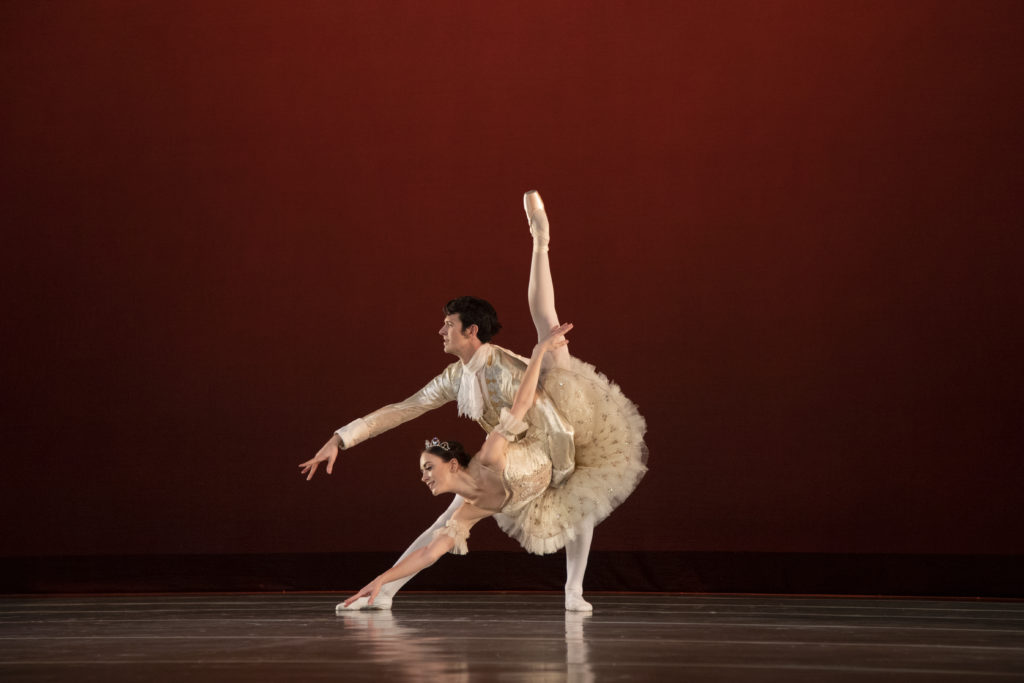Location, Location, Location: 5 Dancers on Negotiating Career Goals With Where They Live
Professional dancers often have a complex relationship with where they live geographically, especially since ballet’s job market is so scarce. In many cases they have to have some flexibility about which city they call home in order to reach their career goals. Sometimes that means taking a chance on an unknown place, or making some sacrifices to be near the ones they love. Below, these pros share how they found themselves where they are today.
Staying Close to Home: Ethan Price, Ballet Arizona

A homegrown talent, Ethan Price started at the School of Ballet Arizona at age 9. Toward the end of his training he intermittently got to work with the company and was offered a position in BAZ’s Studio Company before graduating. Like many young dancers trying to start a career, he was ecstatic to have a job.
Over the years, Price has chosen to continue his career at Ballet Arizona for many reasons. To start with, he says, “I love the rep we do.” With a yearly Balanchine program and classically focused repertoire, he is dancing what appeals to him the most. And he gets to work under the tutelage of artistic director Ib Andersen, who Price says continually drives his inspiration and growth. “Also, moving is horrible,” he jokes. Price counts himself lucky not to have had to move away when he was young like so many dancers do.
While some might wonder if Price feels like he’s missing out by not exploring beyond his hometown, he thinks his longevity offers something unique. “I get to dance with the people I looked up to as a child,” he says. Beyond the company dancers, “I trust [the school faculty and artistic staff] to take care of me. They know I’ll do good work for them, so it’s a fantastic working relationship.” Price also enjoys the support of his family as well as a group of audience members he’s dubbed “Ethan’s Fan Club” who have witnessed his entire career. “Why would I give up on this great opportunity?”
Dancing Apart, Sticking Together: Amelia Grubb Hillman and Logan Hillman, Ballet Des Moines

Recently married Ballet Des Moines dancers Amelia Grubb Hillman and Logan Hillman both grew up in the Washington, DC, area. They serendipitously followed similar paths, training at both the Kirov Academy of Washington, DC, and Akhmedova Ballet Academy. The pair started dating at the beginning of their careers, and have spent their professional lives navigating how they can continue to dance together.
Early on, both held a strong primary goal to prioritize professional growth individually. Secondarily, of course, they hoped to go to the same place. After dancing together at two different companies for a few seasons, they decided to hit the audition circuit again. This time, they tried a new strategy: divide and conquer.
Grubb joined Ballet Des Moines and Hillman joined Nashville Ballet with a two-year plan to be long-distance. “It took one extra year, though!” Grubb Hillman shares. The idea was that they could each gain firsthand experience of different companies and later assess which would be the best fit for both of them. Or, if neither fit, they’d start over with different options.
Grubb Hillman was happy at Ballet Des Moines, and over the three years they danced separately, her husband noticed that the company’s size and professionalism, as well as opportunities to create new work and collaborate with other artists, appealed to him. He officially joined the company in 2019. While neither dancer envisioned living or dancing in Iowa, they’ve found that the company and city of Des Moines are exactly the environment where they can place roots and thrive in.
California Dreamin’: Mate Szentes, Freelance Dancer

Mate Szentes, a native of Pécs, Hungary, trained at the Hungarian Dance Academy. Upon graduating, he joined the Hungarian National Ballet for three seasons. While he enjoyed dancing in a big company, with 120 dancers, he had a strong urge to live and dance in the U.S. As a teenager he had spent two summers on scholarship at North Carolina Dance Theater, now Charlotte Ballet. He was fascinated by the different styles and teaching methods in the U.S., and felt more accepted by others than he ever had before.
In 2012 he joined Sacramento Ballet, where he had long summer breaks and would travel to take advantage of the ample gig work available in Southern California. After three years, he joined Richmond Ballet for six seasons. “But I knew I would want to come back to California,” he says. “I love the weather, the scenery, there’s always something to do and it’s a different pace.”
When the pandemic hit, Szentes decided it was the right time to move back. Having built a diverse network through his summer-layoff gigs, he felt confident pursuing a freelance dance career and expanding his interest in choreography. With Los Angeles–based American Contemporary Ballet as his home base, Szentes also works with groups like Ballet Project OC and Barak Ballet on shorter-term projects.
For Szentes, balancing his career goals with living in a place that makes him happy has been a constantly changing strategy. “You have to see what you want at different times because it always changes. Five years ago I had different priorities than I have now.”
Taking a Chance on a New City: Whitney Huell, Kansas City Ballet

Whitney Huell’s serious ballet training began at the South Carolina School for the Arts and Humanities, a boarding school an hour and a half away from her home. There she developed both her passion for ballet and her independence at a young age. “I felt like whatever company I get into, it doesn’t matter where I am, because I want to dance.”
Huell completed Indiana University’s dance program in three years and got into Ballet West’s second company in Salt Lake City through connections made at a cattle call in Chicago. She was thrilled to have a job and gladly moved to Utah despite having never been there or knowing anything about it. After seven seasons, Huell decided to expand her horizons and go back on the audition circuit.
Ideally, she hoped to land closer to South Carolina and in a more diverse environment where she could “see more people like myself.” At the same time, Huell was particularly interested in Kansas City Ballet, despite not knowing a lot about the area. When she went there to audition, she expected lots of cornfields, but found Kansas City to be a vibrant, bustling city with the culture and diversity she was craving. When she was offered a contract she thought, “Well, that’s halfway home!” and eagerly accepted.
Huell acknowledges that it can be risky to move to a city and company where you don’t know anyone. But she ultimately found that the reward of taking a risk was worth it. “Don’t rule out a company based on your preconceived notions of what the city might be like. Go there and check it out, because you might be pleasantly surprised and find yourself a new home.”





